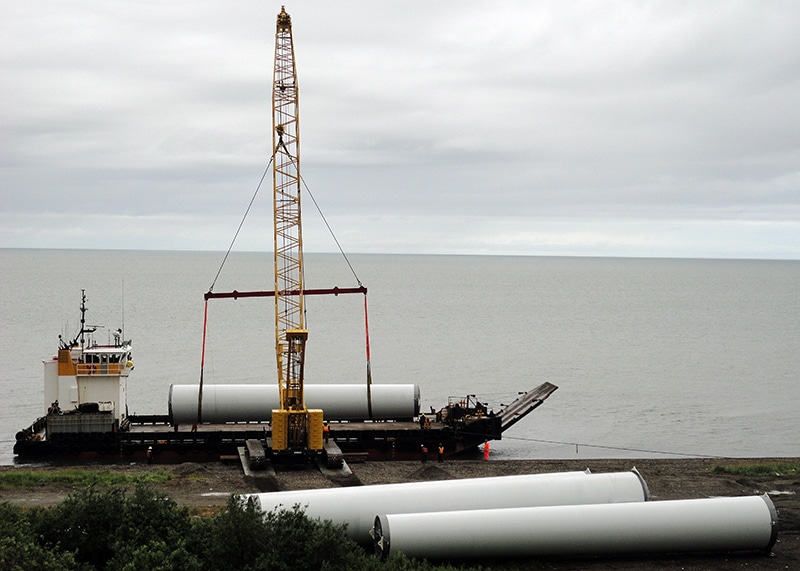In Alaska, there are about 15,000 miles of public roads; about 5,000 are paved. For comparison, Texas—the second-largest state in the United States and less than half the size of Alaska—has more than 300,000 paved road miles. Fewer roads, as one might imagine, means that Alaskans must get creative when it comes to heavy infrastructure installation.

In the Last Frontier, much of the transportation of heavy equipment takes place by barge—that is, when the waterways aren’t frozen solid. “You have a set window in the summer from spring breakup to fall freeze-up” to transport things, explains Alaska native Brennan Walsh, president of STG Incorporated, a specialty contractor in Alaska with expertise in infrastructure and remote construction.
Walsh, who grew up in Nome, studied civil engineering at the University of Nevada in Reno. His training as an engineer taught him to pay attention to detail and think in terms of problem-solving, not just template. That, along with his familiarity with the landscape of his native state, the rivers and waterways, and his relationship with other contractors here, prepared him for a career where every project is a challenge waiting for a creative solution.
Remote construction challenges
One of the most vital tasks on any project, Walsh explains, is getting a complete equipment list well in advance, so there’s time to transport everything by barge or road before winter sets in and roads become unpassable and the channels freeze up. In a state that would be, in terms of landmass, one of the largest countries in the world, planning and scheduling take on a whole new level of importance.
“You have a very limited window to get all of this stuff for the whole year positioned,” Walsh says, “and you have to be very, very thorough on your material takeoffs in ordering. You really don’t have too many second options if you miss something. Especially if you miss something big—airplanes are limited in their capacity. So, if you really miss something, it can make or break the job, and it could make or break the contract.”
Frozen ground

Walsh recalls one job above the Arctic Circle that required just such planning and knowledge of local seasonality. A few years ago, STG was commissioned to install two EWT 900 wind turbines—at that point, the largest in Western Alaska. The customer, Kotzebue Electric Association (KEA), came to STG as a natural choice—the firm has installed nearly all of the similar-sized wind turbines in the region.
Because of the extreme geography, STG had to account for the permafrost—the layer of permanently frozen ground that exists near the poles. They didn’t want the heat generated by the massive turbines to melt the permafrost, which could lead to structural instability and drastically shorten the life of the installation, so they used special devices. “Thermosyphons are passive cooling devices that we put into the ground to extract latent heat out as we put the concrete and rebar in the foundation,” explains Walsh. In other words, they suck out the heat and keep the ground frozen solid.
Transportation ingenuity
But perhaps the greatest challenge of that job was figuring out how to get a 250-ton crane onto the jobsite. There was no road access, and the crane was being transported on the Chukchi Sea. However, the Kotzebue Sound was too shallow to simply float the crane right in on the original vessel—“You can’t get in there with a large barge line,” Walsh explains.

The solution? “We brought in a shallow draft barge, and we literally drove the 250-ton crane from one barge to the other nine miles out at sea, so we could get the crane into the beach landing. That was pretty wild,” says Walsh. For that transfer, not only was it vital to understand the waterways and the physics of their own equipment, but they also had to understand the barge company’s equipment—what was their craft capable of, how could it be manipulated, and so on. The installation was a success, tripling the capacity of KEA’s wind farm and reducing costs for their customers.
The next year, STG was awarded the Sustainability in Construction Award from the Associated General Contractors of Alaska, in recognition of their contributions. It’s projects like these, Walsh points out, which make him proud to work for a company like STG, and prove that experience, knowledge of local geography, innovation and patience are as important as ever in America’s great frontier.











